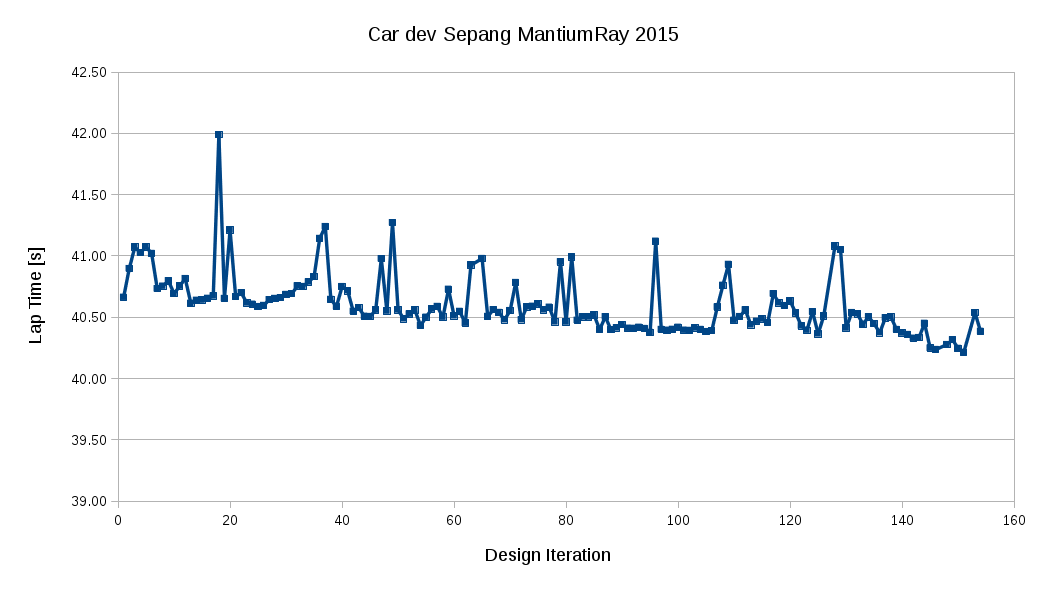Hi etsmc, it is difficult to understand the results of your test: maybe you should choose the one with higher downfoce or higher df/dr ratio.
Generally speaking, if you want to optimize the diffuser design, my advice is to use the whole car (not only the rear wheels influence the diffuser design, even the frot wheels have a significant effect), but with only few parameters to control the diffuser (you should start with a very simple geometry in order to reduce the number of cfd tests).
Here is some examples:
1) Diffuser section is a straight line = only one parameter, the exit height.
2) You can add an intermediate point (single curvature diffuser) = two more degrees of freedom, three parameters.
3) another intermediate point (double curvature): five parameters.
Keep in mind that the angle of attack of the diffuser is the most important parameters. With the actual rules and ride heigh, most of cars use a concave diffuser.
Other details that affect the diffuser performance are:
a) Internal strakes: you should start with no strakes or 2 strakes, small advantages come from an higher number of strakes, think about it only after having optimized everything else.
b) Flow behaviour around the gearbox/impact structure geometry
c) Presence of a small gurney flap above the diffuser end (it depends on the general car geometry: with my layout it can reduce the cooling efficiency, so I can't use a gurnay taller than 15mm)
During 2015 I used a complex double curvature diffuser and I obtained worse results than in 2016 with a much more simple one. At the moment I discovered interesting things just optimizing the "straight line diffuser" with only one parameter.
Another advice is to have and archive with geometry and cfd data, in order to not repeat a development path twice.
PS: I considered a constant section when the car is viewed from the side, but last year I saw at least one astonishing "3d" diffuser (I think it was JJRs car). To develop it would require a big number of parameters to be optimised. You could try to guess that kind of geomwtry without cfd, but only if you are aure about the basics (angle of attack and exit height).
- Login or Register
No account yet? Sign up


